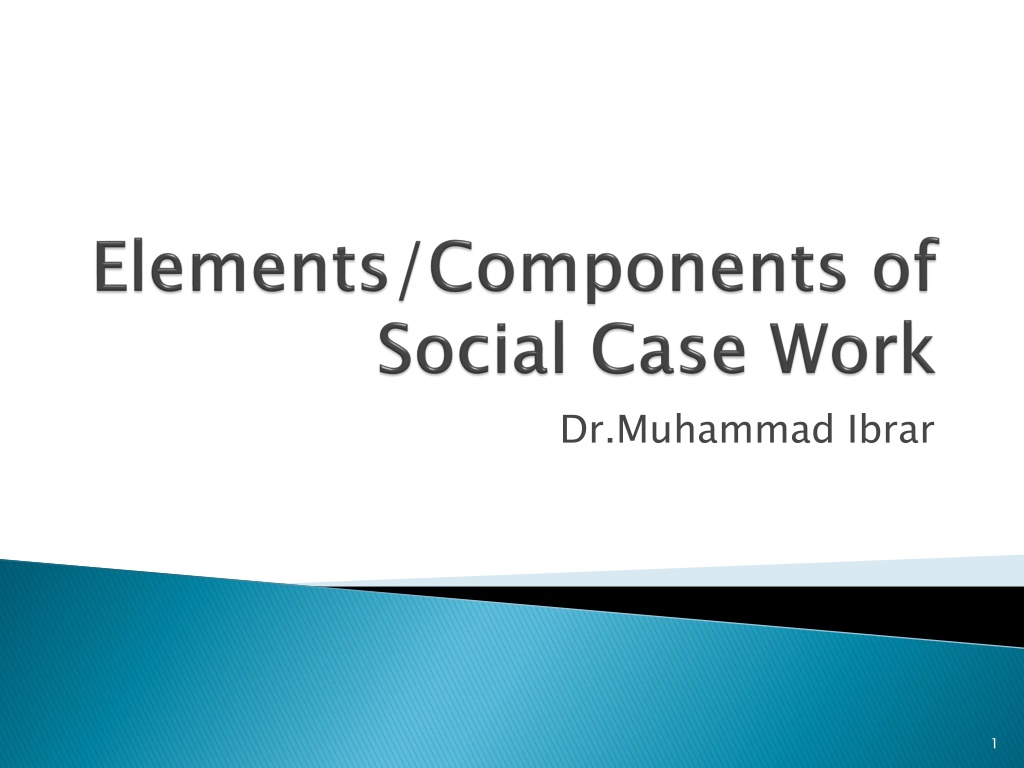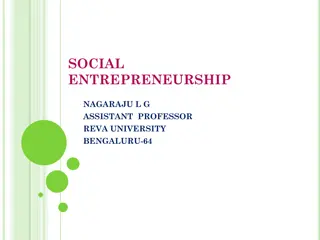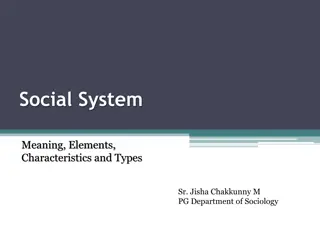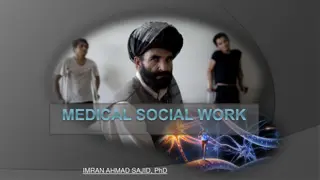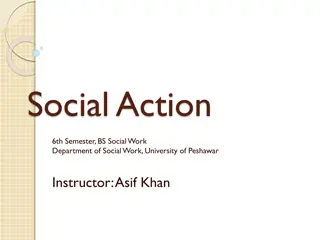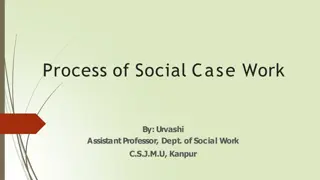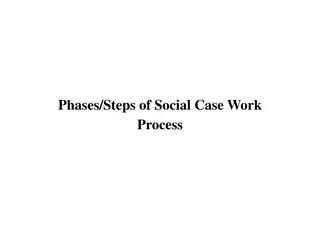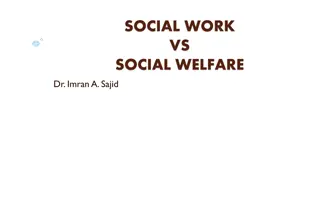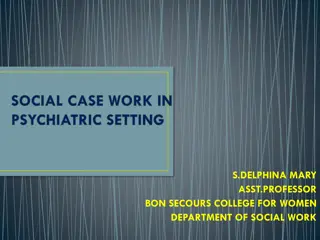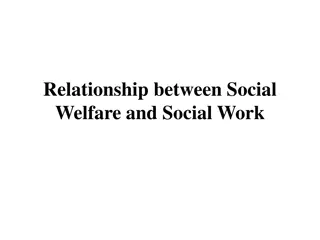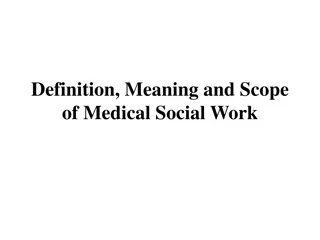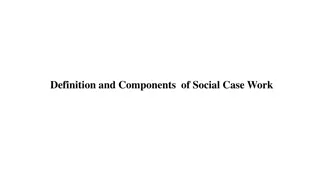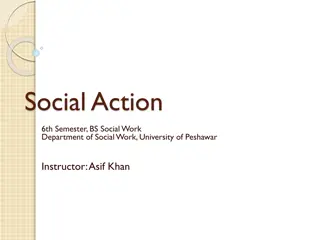Understanding Social Case Work: Elements and Process
Social case work, as defined by H.H. Perlman, is a process used by human welfare agencies to assist individuals in coping with problems in social functioning. The fundamental elements include the person/client, problem, agency, process, and professional representative (social worker). The client, who may be experiencing stress and inability to adjust, seeks help voluntarily or through referrals. Understanding the client's behavior, motivations, and emotions is crucial for effective intervention. The problem affecting the client's social functioning can be diverse, requiring a careful selection of what aspect to address. Interconnected issues and differing client perceptions can complicate the resolution process in social case work.
Download Presentation

Please find below an Image/Link to download the presentation.
The content on the website is provided AS IS for your information and personal use only. It may not be sold, licensed, or shared on other websites without obtaining consent from the author. Download presentation by click this link. If you encounter any issues during the download, it is possible that the publisher has removed the file from their server.
E N D
Presentation Transcript
H.H Perlman defines social case work as a process used by certain human welfare agencies to help individual to cope more effectively with their problem in social functioning. The following are the basic elements of social case work: 2
1. Person(Client) 2. Problem 3. Place(Agency) 4. Process 5. Professional Representative(Social Worker) 3
The person or client is an individual under stress. Because of the forces beyond his conscious control, he is unable to make a personally or socially satisfactory adjustment to the existing situation. He may voluntarily come, or may be referred to the agency by some other institution. 4
To study a person the following points should be kept in mind: I. A case worker does not have to take a complete history : the nature of the problem and the agency will determine the kind and extent of knowledge necessary to help him. II. A person s behavior has meaning and purpose: a case worker must understand the client s behavior and reactions to gain insight into his problems. 5
III. Whether a persons behavior is effective or not in promoting his well-being depends on the functioning of his personality structure. Often a person cannot make the needed adjustment because of his lack of motivation and emotional stability. 6
The problem is that state of the client which effects his/her social functioning. It should be economic, medical, educational, recreational ,psychological, social or physical. So its important to understand the different aspects of a problem. I. The case worker and the client has to select a part of the problem. The selection of that is on the following basis: a) What the client wants and needs b) What is the solution c) What the agency is far and can offer 7
ii) Problem in any part of a persons living tends to create a chainreaction . Thus a person suffering from physical ailment (illness) may have psychological and social problems as well. It is important to understand which one is the cause or the effect. iii) The client may have different conception about his/her problem due to psychological stress or social perception. 8
Problems can be categorized as follows (Grace Mathew): 1.Problems related to illness and disabilities 2. Problems due to lack of material resources. 3. School related problems. 4. Problems related to institutionalization. 5. Behavior problems. 6. Problems of marital discord. 7.Clients caught up in social problems like gambling, prostitution, alcoholism, drug addiction. Problems can be categorized as follows (Grace Mathew): 9
A social agency is an organized institution for expressing the will of a society or of some groups in that society for the welfare of its people. The classification of the welfare agencies are as: I. Private (Funding Agencies) or Public agency (Social Welfare) II. Primary(NGOs) or Secondary agency (Hospitals, Schools etc) III. Local, provincial or national agency. IV. Closed or open agency 10
Each social welfare agency develops its programmes by which a particular area of social needs are served. The effectiveness of service will depend on the resources of the agency, competence of its staff and support of the community. The social case worker is employed by the agency, the range and nature of his function being defined and limited by the agency. 11
Like other profession the social case worker have to adopt certain processes to find out the solution for the problem the client have. 1. First contact: little can be achieved unless the contact with the person needing help is such that it leads to the establishment of a relationship which can be maintained through out the case . Through this rapport, the case worker enables the client to solve his problem. It is essential for the social case worker to be the sort of a person who can quickly help the client to feel at ease. 12
ii ii. . Social and home visits the social case worker formulates a social history of the client. Social history is the picture which the case worker makes of the client out of the information given by the client, out of the impression the client makes and out of the knowledge he has acquired in his training and experience. Social history history: : Through frequent interviews 13
The last but not the least and important element of social case work is professional representative. He/she will be a person of having sound and enrich knowledge of the social work practice, how to use the tools for the improvement and what should be done in the future. In simple word the professional representative means social worker. 14
